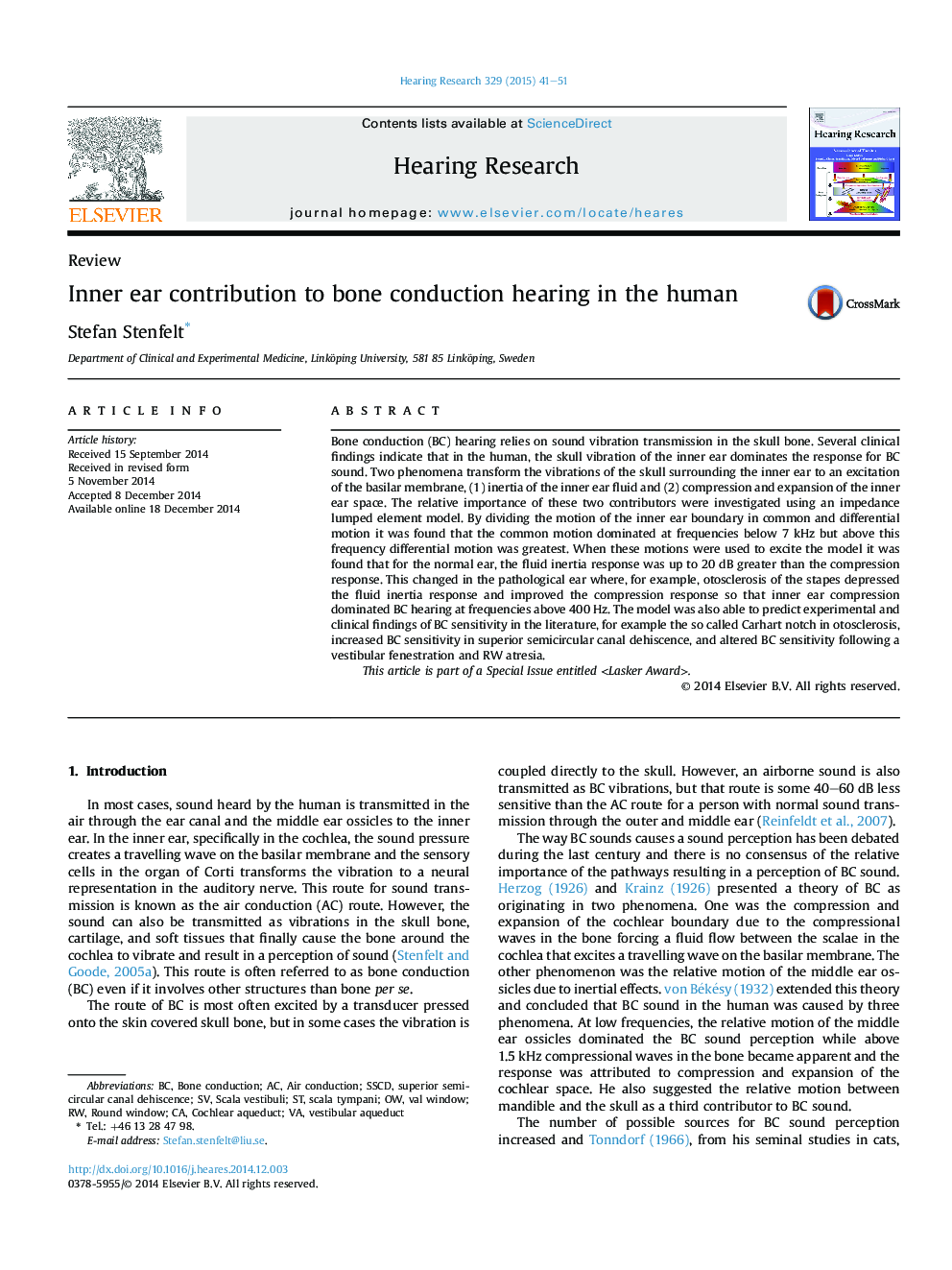| کد مقاله | کد نشریه | سال انتشار | مقاله انگلیسی | نسخه تمام متن |
|---|---|---|---|---|
| 4355084 | 1615571 | 2015 | 11 صفحه PDF | دانلود رایگان |
• An inner ear model for BC predicts the contributions from fluid inertia and inner ear compression.
• In the normal ear fluid inertia dominates the basilar membrane response.
• In pathological cases, compression of the inner ear can become important.
• The middle ear is not required to explain the Carhart notch.
Bone conduction (BC) hearing relies on sound vibration transmission in the skull bone. Several clinical findings indicate that in the human, the skull vibration of the inner ear dominates the response for BC sound. Two phenomena transform the vibrations of the skull surrounding the inner ear to an excitation of the basilar membrane, (1) inertia of the inner ear fluid and (2) compression and expansion of the inner ear space. The relative importance of these two contributors were investigated using an impedance lumped element model. By dividing the motion of the inner ear boundary in common and differential motion it was found that the common motion dominated at frequencies below 7 kHz but above this frequency differential motion was greatest. When these motions were used to excite the model it was found that for the normal ear, the fluid inertia response was up to 20 dB greater than the compression response. This changed in the pathological ear where, for example, otosclerosis of the stapes depressed the fluid inertia response and improved the compression response so that inner ear compression dominated BC hearing at frequencies above 400 Hz. The model was also able to predict experimental and clinical findings of BC sensitivity in the literature, for example the so called Carhart notch in otosclerosis, increased BC sensitivity in superior semicircular canal dehiscence, and altered BC sensitivity following a vestibular fenestration and RW atresia.This article is part of a Special Issue entitled
Journal: Hearing Research - Volume 329, November 2015, Pages 41–51
